Ceremony Theory is my collection of emotional insights, calm-inducing techniques, written content, and best ceremony practices, all in development since I began officiating weddings in 2010.
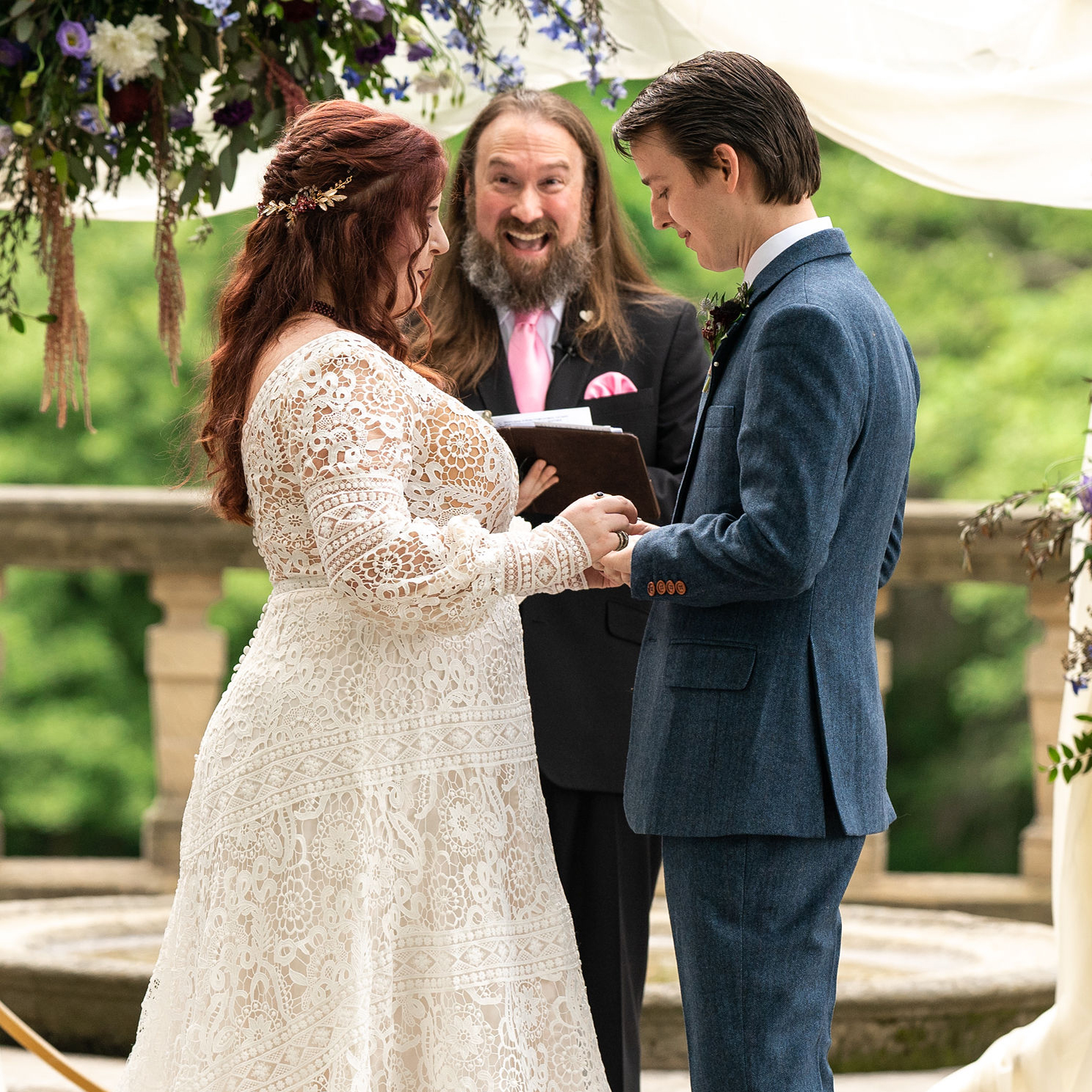
An Emotional Hot Air Balloon Ride
It's easy to think of a wedding ceremony as simply a speaking engagement. While solid public-speaking skills are a must for the role, a truly talented officiant will utilize those skills to manipulate the emotional state of both the couple and those attending their ceremony. While “emotional manipulation” is usually a bad thing when it comes to our interpersonal communications, it's vital during a ceremony. While an emotional roller coaster will take us up and down and vary in speed and intensity, my goal in piloting this emotional hot air balloon is to keep it aloft with my carefully chosen words, then let the winds of personal reflection guide it to its destination.
The two of you, and your family and friends, are all feeling a complex mix of love, anticipation and optimism. Here's how I manage each of them.
Love's many facets bear many reflections. Love itself is the wellspring of many other feelings – especially comfort, belonging, safety, connection and a sense of purpose. By thoughtfully examining the feeling, I'm able to evoke those other feelings as well.
Life's big moments don't get much bigger. When considering your wedding day, you're sure to be filled with anticipation. I play up this sense of anticipation for all of the “big” moments of the ceremony by moving through them purposefully and carefully, without rushing or treating them as anything less than the magnificent, transcendent moments they are.
You have a lot to look forward to. Life's possibilities, when viewed through the lens of your love and your newfound commitment, will feel boundless. I share in that optimism and I make reference to it throughout the ceremony.
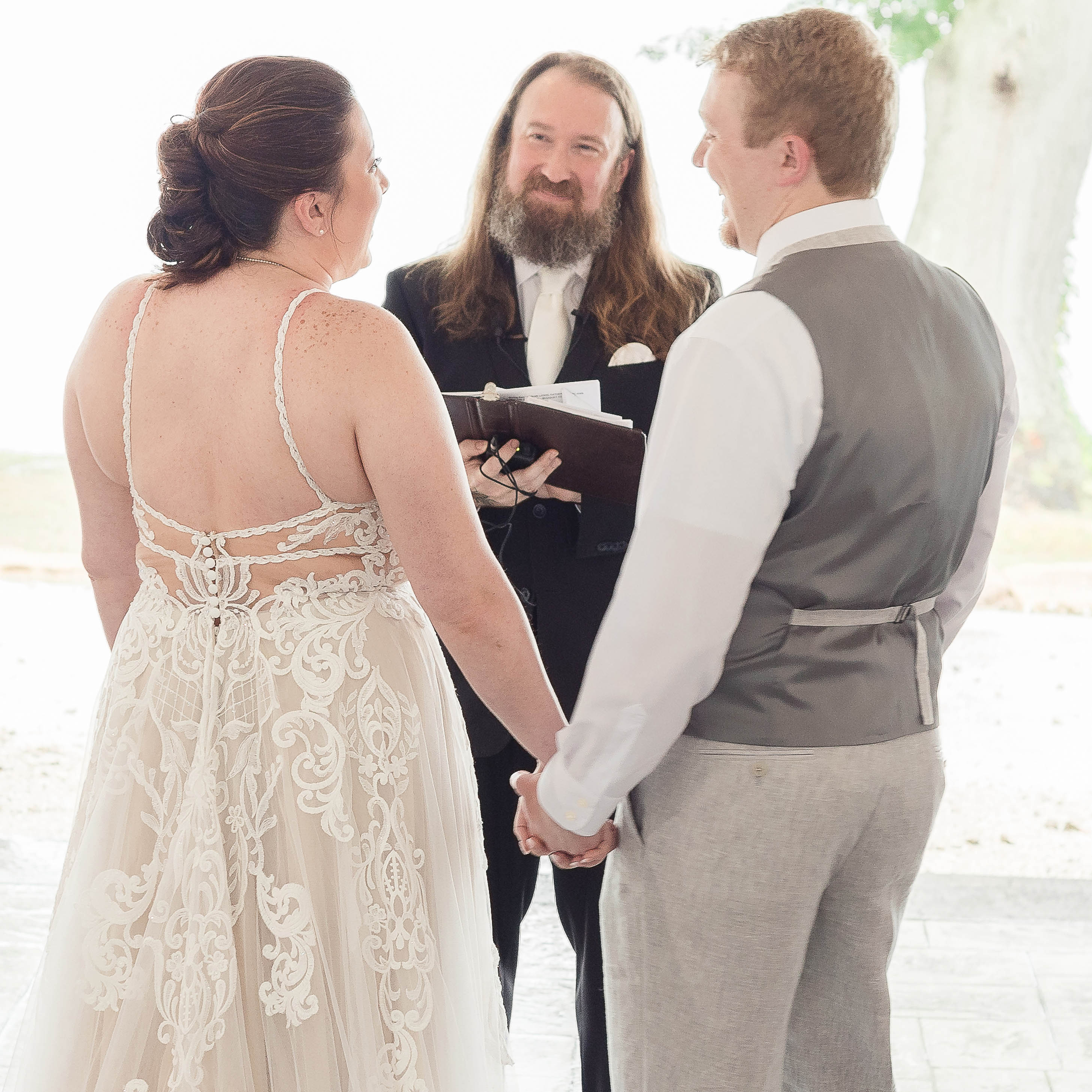
Your Wedding Ceremony – A Love Letter to Love Itself
Here are the most important things to know about the content of your ceremony.
I follow a familiar three-act structure. You can read about each act in detail below.
I only examine three subjects throughout the ceremony. Those subjects are: love, commitment and how mercury-poisoning crazy you two are for each other.
I don't read religious scripture, pray or make any references to any religion or god. While scripture readings and prayers are options for your ceremony, they are not the default and must be shared by others.
Your ceremony has been “workshopped” hundreds of times. There are two types of wedding officiants: those who recite and those who engage. Reciting a ceremony is a strictly a one-way affair – it doesn't take into account any of your audiences' or your reactions. I engage with you and your attendees, quite simply, by paying attention to what lands and what doesn't. Did the funny bit get the intended chuckle? Did the purposely terrible pun get the intended groan? Did the delicate reflection on love make a few eyes misty? Over the course of many hundreds of ceremonies and after gauging thousands of reactions, I kept what worked, refined and tweaked what almost worked, and scrapped what didn't.
It is judicious in its use of metaphor, surgical in its use of humor, and devoid of cliché. Metaphor is best employed lightly, purposefully and never in excess. Humor can't devolve into a stand-up comedy routine – it must be used to frame or “punch up” already funny things. Cliche is the enemy of attention and the best friend of laziness – I have more gripping, thoughtful ways of saying what must be said.
It draws heavily on my couples' personal experiences. After a ceremony, I am often asked if I'm an old friend of the couple or of one of their families. That's because I tell anecdotes about my couples and their experiences, speak expertly about exactly why they love each other, and bring light to the unique aspects of their romance.
It is completely original and carefully cited. The ceremony content consists almost entirely of my own musings on love and commitment. When I quote or even paraphrase someone else, I give them credit. When I read a longer piece as a formal reading, I source it carefully, attribute it squarely to its original author, and give it the necessary context.
You need a chill pill? I have the script! Over the course of hundreds of ceremonies, I've developed a set of perfectly timed statements, quiet asides, cheeky observations, and other techniques to manage the anxiety you'll no doubt both be feeling. It's not enough to simply know that you'll be feeling a general sense of anxiety during the ceremony – that much is obvious. The important thing is to anticipate what specific moments during the ceremony are going to make you the most anxious, and either avoid or mitigate them.
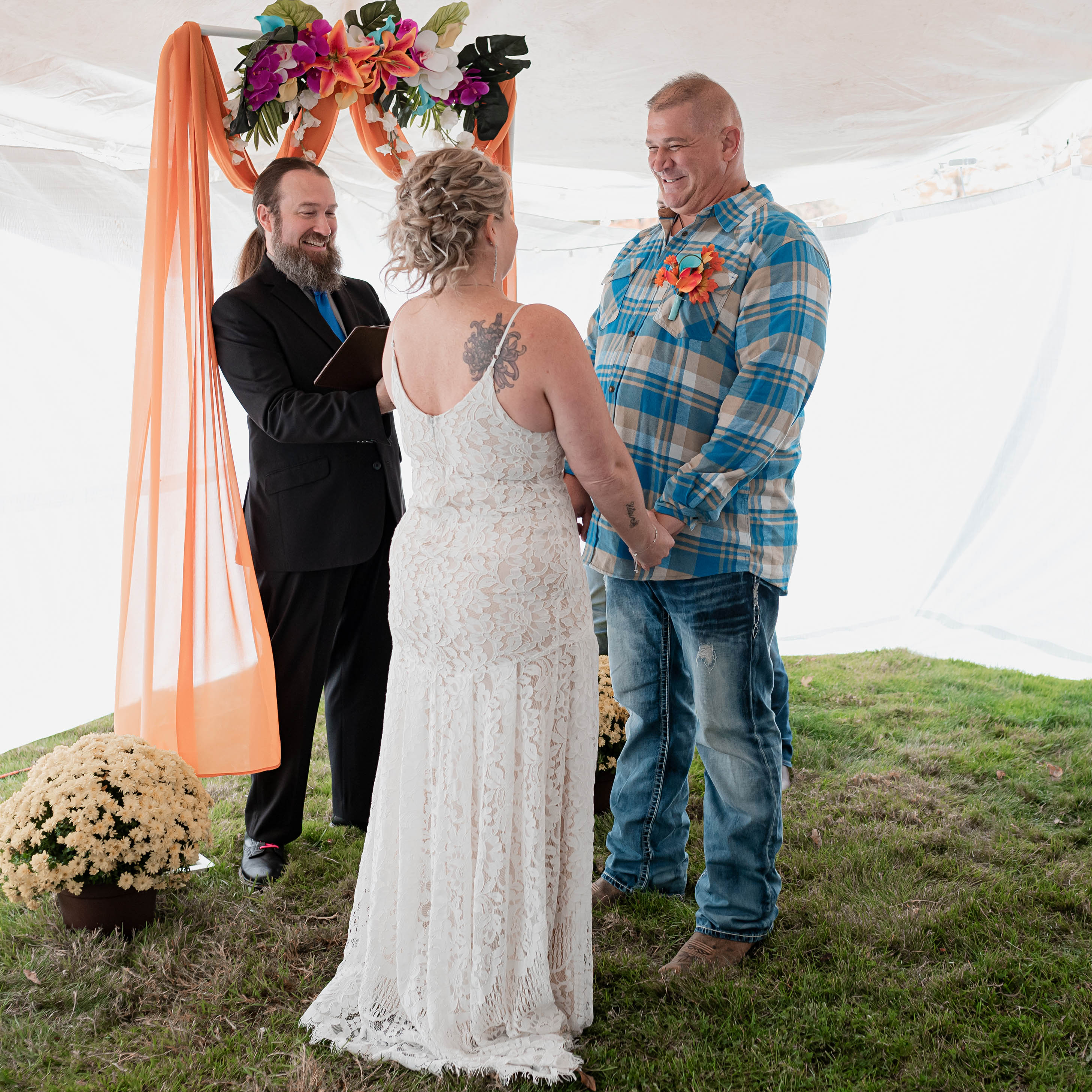
Best Practices For Better Ceremonies
Here are some general guidelines I follow when composing or performing a wedding ceremony.
The ideal ceremony is 15-20 minutes long. Let's face it – none of your guests came to your wedding to hear me speak. They came to eat, drink, dance and generally celebrate, to which the ceremony is often thought of as an impediment. But instead of treating the ceremony as a necessary evil and/or an afterthought, I choose my words carefully for maximum emotional impact and treat the time with the reverence (but also the lightheartedness) it deserves.
Each of the ceremony's three acts (see below) should be of roughly equal length. Not preparing enough content for each act can cause it to feel rushed and clunky.
Careful consideration must be given to when things happen. If you break it down to its most basic components, a wedding ceremony consists of two things: brief spoken segments interspersed with “mini-ceremonies” (smaller ceremonies within the broader ceremony – things like exchanging rings or lighting a unity candle) throughout. As a seasoned officiant, I know exactly when to speak on any given topic, where best to position mini-ceremonies, and how to segue seamlessly between each of these elements.
You need a paragon of calm to gather around. Both before and during your ceremony, your anxiety will be unavoidably piqued. There's no single remedy for being in that state – instead, I have developed a set of tested strategies to quell that anxiety and keep you both as calm and focused as possible. These include helpful reminders and coaching sessions at your rehearsal and immediately before the ceremony, as well as brief asides during the ceremony itself to alleviate your stress and help you “stay in the moment” - and out of your own heads. My wealth of officiating experience and high emotional intelligence means that I can anticipate those natural spikes in your anxiety, which allows me to be decidedly proactive in my efforts to manage it.
You need a troubleshooter. As an event that most people rarely participate in, it's easy to imagine - something goes wrong before or during a ceremony and no one knows what to do about it. An inexperienced officiant won't know what to do in those scenarios either, and the urgency and anxiety that can arise when it happens during the ceremony proper can bring the entire affair to a halt. Instead, I'll have a solution ready on the fly to keep the ceremony moving smoothly, a quip and a laugh to cut through any tension, and an array of those calming strategies mentioned above to keep your attention where it belongs – on each other, rather than on some ultimately inconsequential flub.
There should be no surprises. There’s no better way to further fray those nerves or ruin the vibe than by surprising the couple mid-ceremony. Once we've rehearsed, I don’t change up the order of things, alter wording or do anything you won’t be expecting. Prepared couples are calm couples. The calmer you are, the more capable you’ll be of truly appreciating the gravity and the levity of the experience.
There must be a script. A lot of officiants will go “off script” – or worse yet, bring no prepared remarks at all – and the results are usually boring, painful and groan-inducing. That’s when they begin talking in circles, stumbling over words and thoughts, and getting details wrong. I prepare the ceremony carefully and deliver it purposefully.
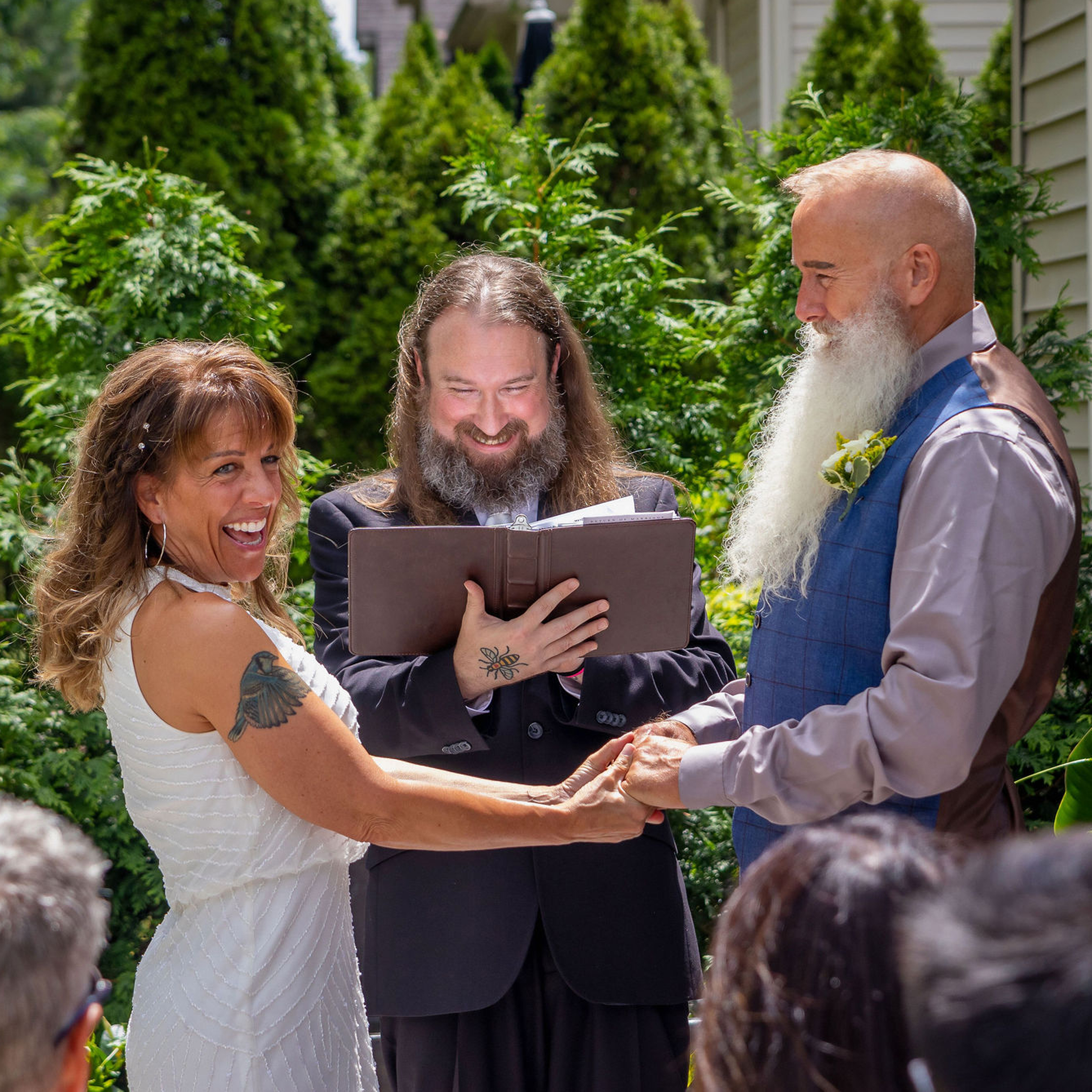
The Loveliest Love Story Ever Told – Yours!
The three-act structure is widely used in fiction - there, the acts are known as the Setup, Confrontation and Resolution. In Ceremony Theory, I have rebranded them as the Hype, the Promises and the Goodwill. Each act has a different purpose and emotional flavor, explained in detail below.
Act One - The Hype
SEGMENTS: Words of Welcome, Reading
OPTIONAL SEGMENTS: Second Reading, Religious Readings, Remembrances
YOUR JOB: Stand there, hold hands, smile
HOW IT GOES: I begin the ceremony by welcoming your friends and family. Then, I briefly wax poetic about love and commitment. (If asked to say remembrances for departed friends and family, I do so here.) Next, I'll introduce the author and name of the reading you selected, then either read it myself or introduce the person you chose to do so. (One or both of these may be religious readings, at your discretion.)
HOW IT FEELS: In Act One, I tell your friends and family just how much love kicks ass. I talk about love's fundamental necessity within the human experience and I reflect on how bold it is to make a lifelong commitment to another person. The reading or readings that follow are an extension of that effort. It's important to begin with reflections like these to keep the emotional impact of Act Two from feeling rushed. In Act One, I am love's hype man. I give commitment five stars and two thumbs up. I remind everyone how great it is to love and to be loved.
Act Two - The Promises
SEGMENTS: Questions of Intent, Exchange of Vows, Exchange of Rings
OPTIONAL SEGMENTS: Mini-Ceremony
YOUR JOB: Say "I will," repeat or read your vows, repeat three brief lines after me as you exchange rings
HOW IT GOES: Act Two begins with the questions of intent. In TV and movie weddings, this is where the couple says "I do." (Here you'll say, "I will.") You'll then say your vows to each other, either by repeating lines after me or by writing and reciting your own vows. I'll then speak briefly about the symbolism and significance of your wedding rings, and you'll exchange them while repeating three brief lines. Certain (optional) mini-ceremonies like the lighting of a unity candle or pouring of unity sands (among many others) are best conducted at the end of Act Two.
HOW IT FEELS: In Act Two, with the mood still brimming with enthusiasm and optimism, you'll make your promises. Your friends and family, having heard and contemplated the reflections that I shared in Act One, are now downright eager to see them put into practice. The act of saying vows and exchanging rings is inherently inspiring. The room will be silent, but emotionally, they're all on their feet cheering for you.
Act Three - The Goodwill
SEGMENTS: Couple Chronicle, Secular Blessing, Pronouncement
OPTIONAL SEGMENTS: Mini-Ceremony, Prayer
YOUR JOB: Kiss at the end!
HOW IT GOES: Act Three begins with some deep personal reflections about the two of you and your time together, which I derive from the answers you've given to me in your questionnaire. My penultimate act is to issue a secular blessing that consists of some sound advice for living a good married life - but without getting preachy or condescending. I conclude the ceremony with the pronouncement, you kiss, then you bounce! Certain optional mini-ceremonies (like handfastings, tree plantings and time capsule sealings to name a few) are best conducted toward the end of Act Three. You may elect a friend or family member to come forward and conclude the ceremony with a prayer, but this is purely optional.
HOW IT FEELS: The purpose of Act Three is to gather up the emotional goodwill and quiet exuberance of your friends and family and deliver it to the two of you on their behalf. The mood of your attendees remains stratospheric, and they're wishing you all the best. Emotionally, they're looking to "let go" and know that you can handle yourself on this journey, even when you encounter peril - I reassure everyone that your love and the commitment you just made will steel you to face any crisis. I have found Act Three to be the time when people are most prone to smile and laugh, which makes it a perfect time to drop in personal details about you during the Couple Chronicle. It's important to do this tastefully and with some levity - some stuff is too personal or mundane to share, and trying too hard for the laugh backfires too often to make it worth the risk.
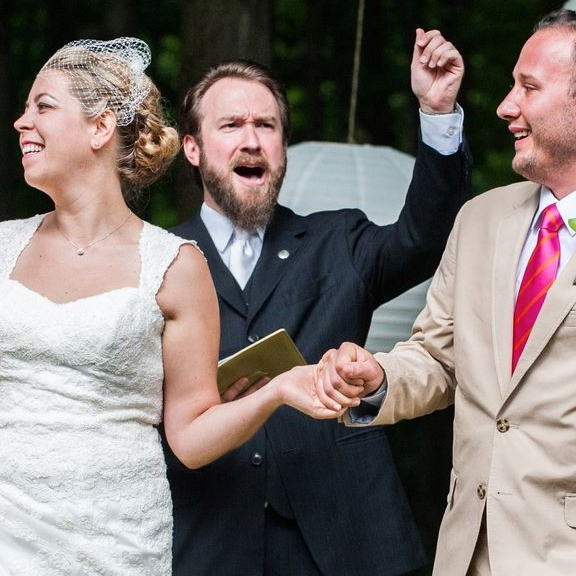
From Theory to Practice
There are few events in your life that will require as much planning and emotional investment as your wedding day. When you stop to consider just how much you've sunk in it – your money, your time, your effort and your very heart – you'll want the person presiding over the ceremony itself to give some similar fraction of themselves. You came prepared for this moment – make sure that your officiant does the same. Better yet, make sure I'm your officiant! But do it now - dates are booking fast.
